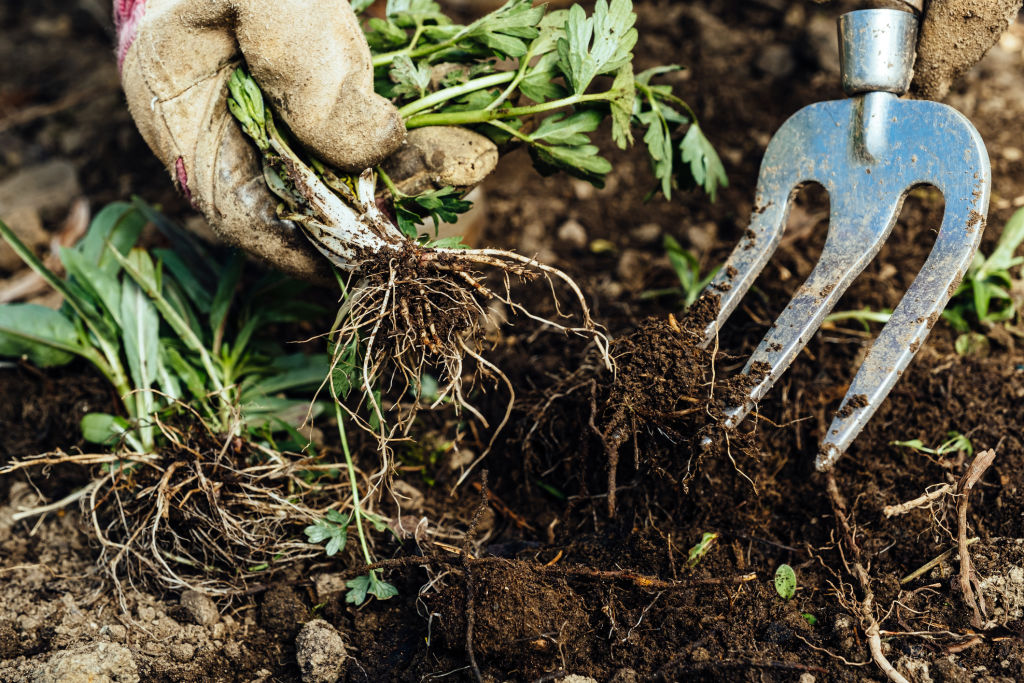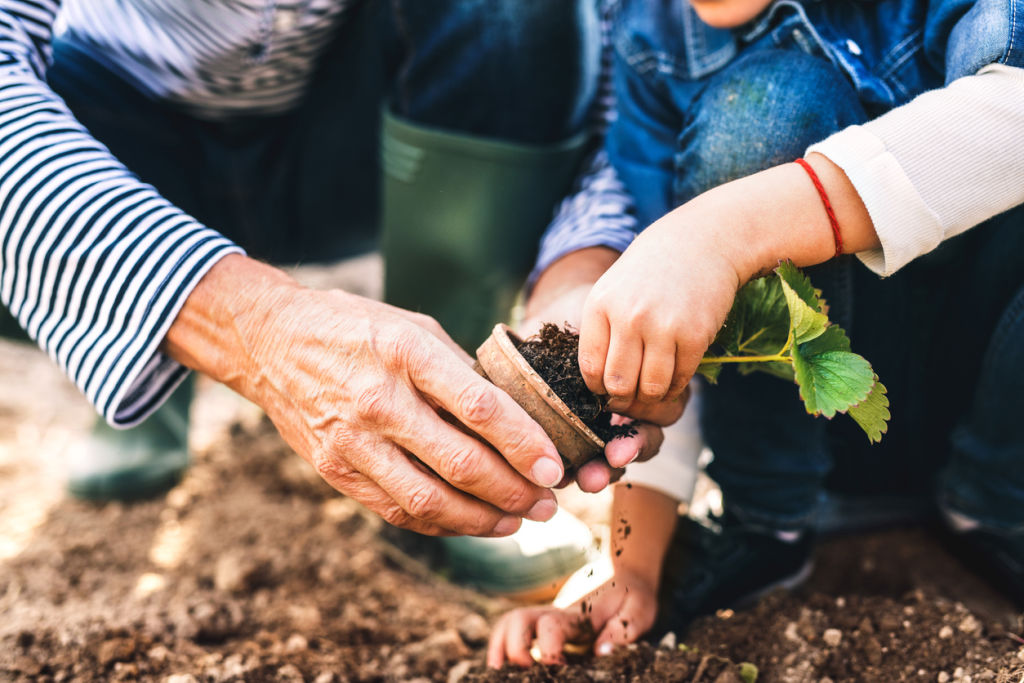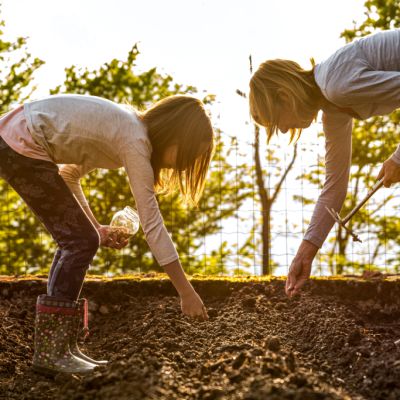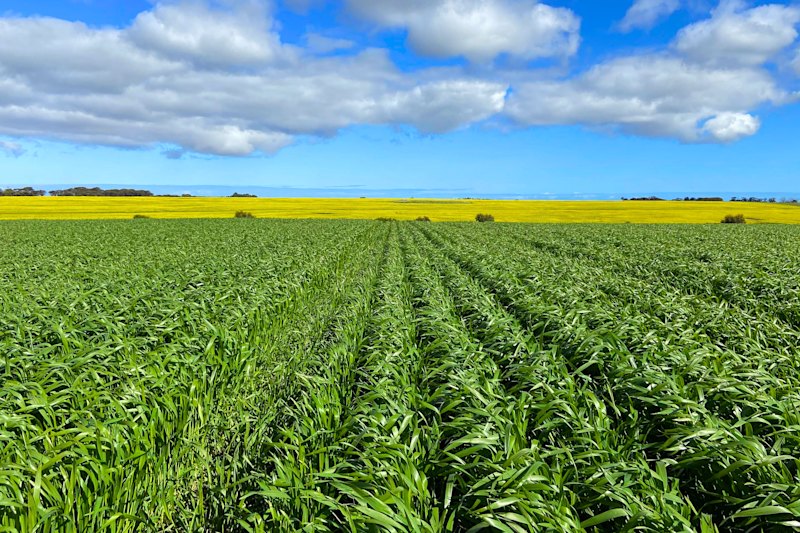A guide to winter gardening: What to prune, what to pick and what to plant

For award-winning horticulturalist Tammy Huynh, there is plenty to love about winter.
“I love the changes the season brings,” the owner of Leaf an Impression shares. “The pace slows, deciduous trees lose their leaves revealing their sculptural silhouettes, and winter veggies are being harvested for hearty roasts and soups.
“It’s not as lively as other months, but it’s a good reminder for us to slow down, too.”
It’s a feeling shared by kindred spirit Andy Kepitis. When he’s not improving other people’s gardens via Kep Horticulture, you will find him lovingly tending the lush wonderland at his home in Melbourne’s inner north.
“Winter can be a time where we see minimal progress in some of our plants but others will take the spotlight,” he says.
“In my garden and in my greenhouse, in particular, loads of my South African succulents are in the midst of their growing season and start to send out flowers, which gives me the opportunity to try and hybridise them. So, in my gardening world, winter is one of the busier and more rewarding times of the year to be outside.”
For the rest of us, as the days grow shorter and colder, it is tempting to neglect our gardens in favour of a sleep-in or the lure of a cosy fire. According to the experts, this is one of the most common mistakes home gardeners make.
Essential winter gardening jobs

Kepitis says winter can serve as a time to lay the groundwork for spring success, offering this checklist: plan out new garden beds, edit current garden beds, clean up properly and stay on top of weeds.
“Even do jobs like adding drip-line irrigation while there isn’t too much foliage in the way, which will go a long way to helping your garden in the warm months.”
1. Safeguard plants from frost
The main thing gardeners should be wary of during the colder months is frost, says Kepitis. “Healthy plants stand a better chance of surviving heavy frost, so feeding your garden in late autumn and early winter will go a long way to help.”
You can do this by digging compost into garden beds, especially those that have exhausted their nutrients while growing vegetables over the summer. Consider planting a green manure crop, grown specifically to return nutrients to the soil. A layer of mulch is also important to protect against chill.
2. Get on top of weeds
“Weeding! It’s not interesting, nor fun – although it can be quite cathartic – but it’s necessary,” says Huynh with a laugh. “Weeds can harbour pests and diseases and can also quickly take over paths and garden beds.”
While you are weeding out unwanted greenery, it is important to also remove any dead or dying plants as they too can spread disease to their healthier neighbours come spring time.
Kepitis proposes throwing flower seeds on patches of bare soil. “I’ve found it to be a very economical way to add some extra interest and colour to garden beds and also to provide some competition to weeds coming back up.”
3. Lop old plant growth
Now’s the time to prune deciduous trees and shrubs, cutting back branches to help stimulate growth in spring. If you are unsure of where to cut or how much to lop off, Huynh suggests taking the time to research each plant before you take to the tools.
“Always use sharp loppers or secateurs. This ensures a clean cut and reduces the chance of fungal problems.”
A word of warning for cool-climate gardeners: “resist the urge to completely clean up frost-tender plants in early winter,” says Kepitis. “Leave some of the older ragged foliage that can ‘shield’ any new shoots that are forming and wait until the last frost has passed before cleaning the plant up completely.”
What to plant in winter

Deciduous trees and shrubs
It’s the perfect time to plant apple, pear, plum, peach and apricot trees, and ornamentals such as Japanese maple, crepe myrtle and roses.
“You buy them as bare-rooted specimens in store – they look like dead and lifeless sticks, but rest assured they will burst back into life once the weather warms up in spring,” says Huynh.
Ensure you prepare the planting spot well – at least a few weeks prior to planting – by digging in lots of organic matter like Dynamic Lifter and aged manures.
Vegetables and herbs
Our experts say Brassicas (kale, cabbage, Brussels sprouts, broccoli and broccolini, among others) love the cooler weather, so are ideal for planting now. “Spinach, bok choy and rocket are fast growing and tolerant of cold conditions – sow seeds in pots and keep them close for easy picking,” suggests Huynh. Consider peas, broad beans, parsnip and beetroots, too.
As for herbs, try coriander, dill, rosemary, sage or mint. If frosts are expected, Huynh’s advice is to move pots to a warm, protected spot or cover with frost cloth at night.
When watering plants in winter, Kepitis says most veggies will benefit more from two deep soakings per week, rather than the almost-daily watering that summer crops require.
Berries for summer
If you love snacking on berries throughout summer, now is the time to plant out crops of blueberries, currants and raspberries, says Kepitis, although each plants’ soil requirements need careful consideration – blueberries like very acidic soil, for example.
“Young plants may need some frost protection and cloches as simple as plastic bottles can be used,” he says.
You can create mini greenhouses with old windows or glass panels sitting on some timber edging which will allow light to enter and retain some heat during the cold nights.
We recommend
States
Capital Cities
Capital Cities - Rentals
Popular Areas
Allhomes
More










